
Waterhemp Detection in Corn Field by using a Semantic Segmentation model
Waterhemp Detection in Corn Field by using a Semantic Segmentation model
One of the main and important challenges for farmers in the process of growing crops is timely identifying and controlling weeds . Early detection and management of them can have a great impact on increasing the quality of the crop. Dealing with this challenge becomes more difficult and serious when the crop is being grown over a large area and monitoring and managing all its parts is a difficult task.
What is the project about?
In this blog we want to talk about detecting waterhemp in a corn field. What is the main problem?. Why is detecting waterhemp important?
Waterhemp interference in corn. Waterhemp competes with corn for nutrients to grow, causing problems such as nitrogen deficiency in corn. For more information refer to “Common waterhemp (Amaranthus radis) interference in corn”. Therefore, its early detection helps farmers to take the necessary measures to control its growth at the right time.
What is our approach?
1- Data Collection
We collected some images of a corn field using a drone. You can see some examples below:
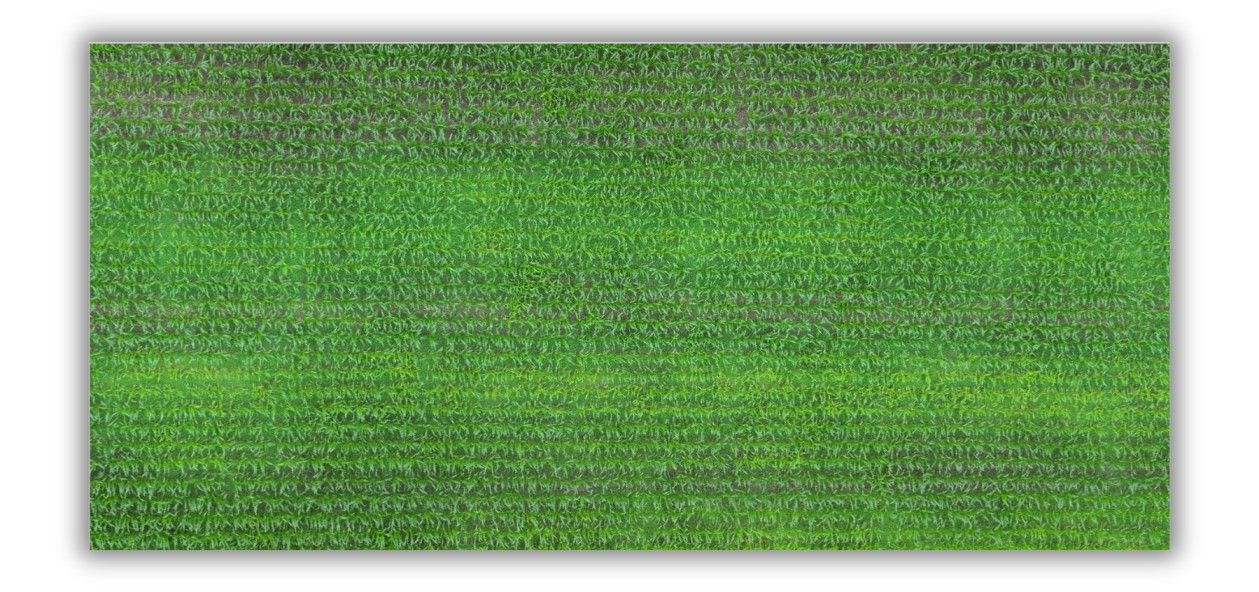


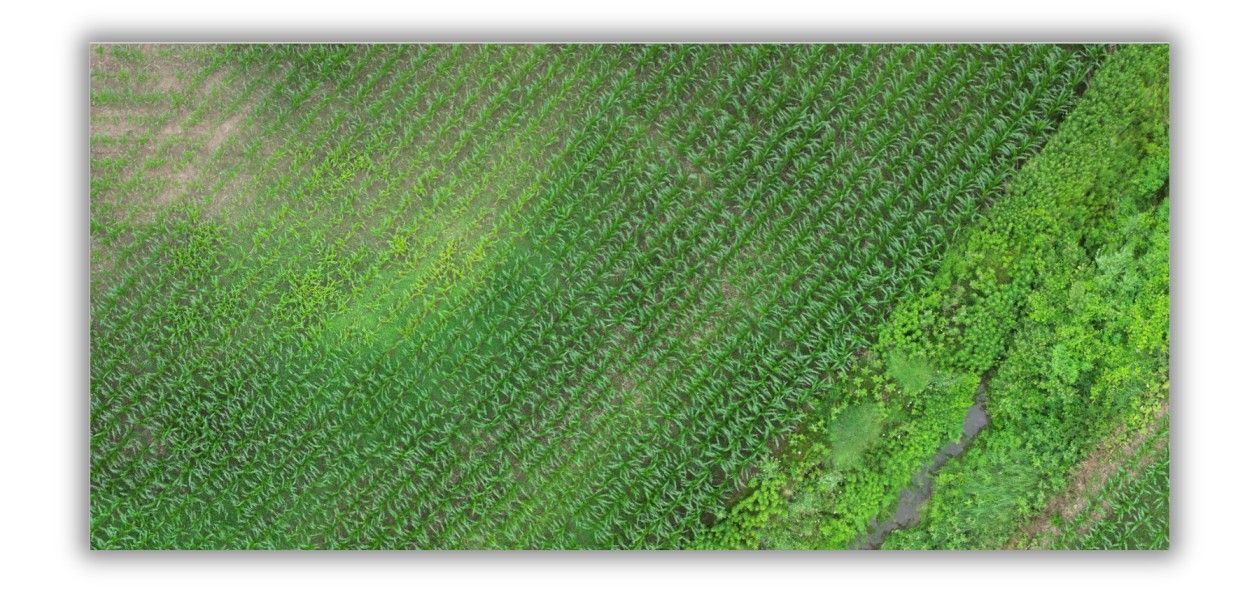
2- Analysis the images
The main goal of this project is to detect waterhemp, however, we propose an approach that detects three categories: areas containing waterhemp, areas containing healthy corn, and areas containing stressed corn. This approach gives farmers more information about the condition of their fields and allows them to manage and plan for each area separately. First, look at the image below to better understand what we want to do:

Based on the experience gained from projects such as Pine Counting, Fleabane Detection, Paper Surface Defect Detection etc. we found that when we face a problem that does not require the recognition of objects with a well-defined and regular shape, it is better to use segmentation models instead of detection models. On the other hand, in this project, we need to classify different areas within an image, that is, we need to assign a class to each pixel, so the best way to do this is to use semantic segmentation models.
3- Annotation Data
Accordingly, we annotated the collected images. We did this using the Sairone annotation tool, examples of which can be seen in the images below:
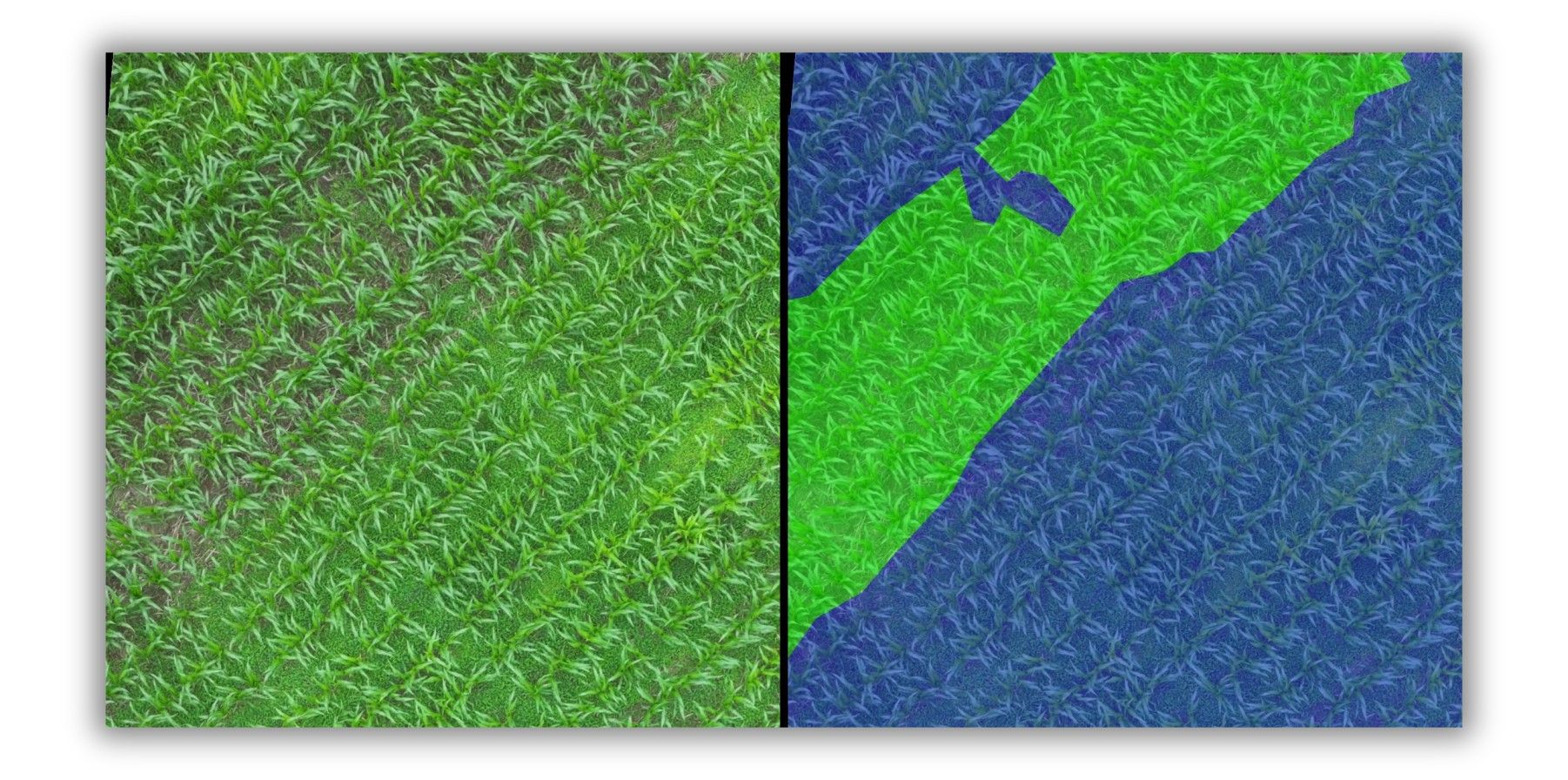
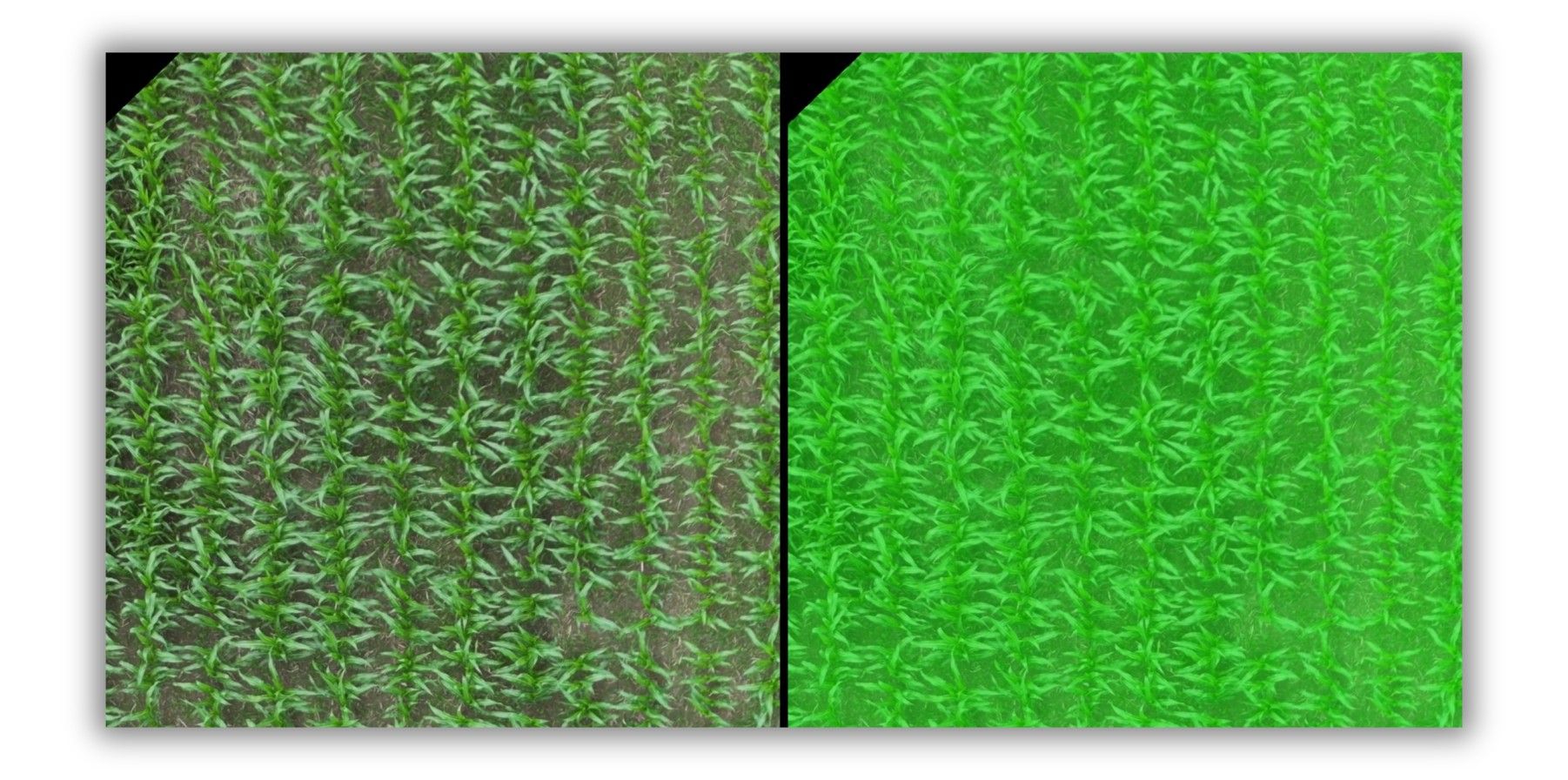

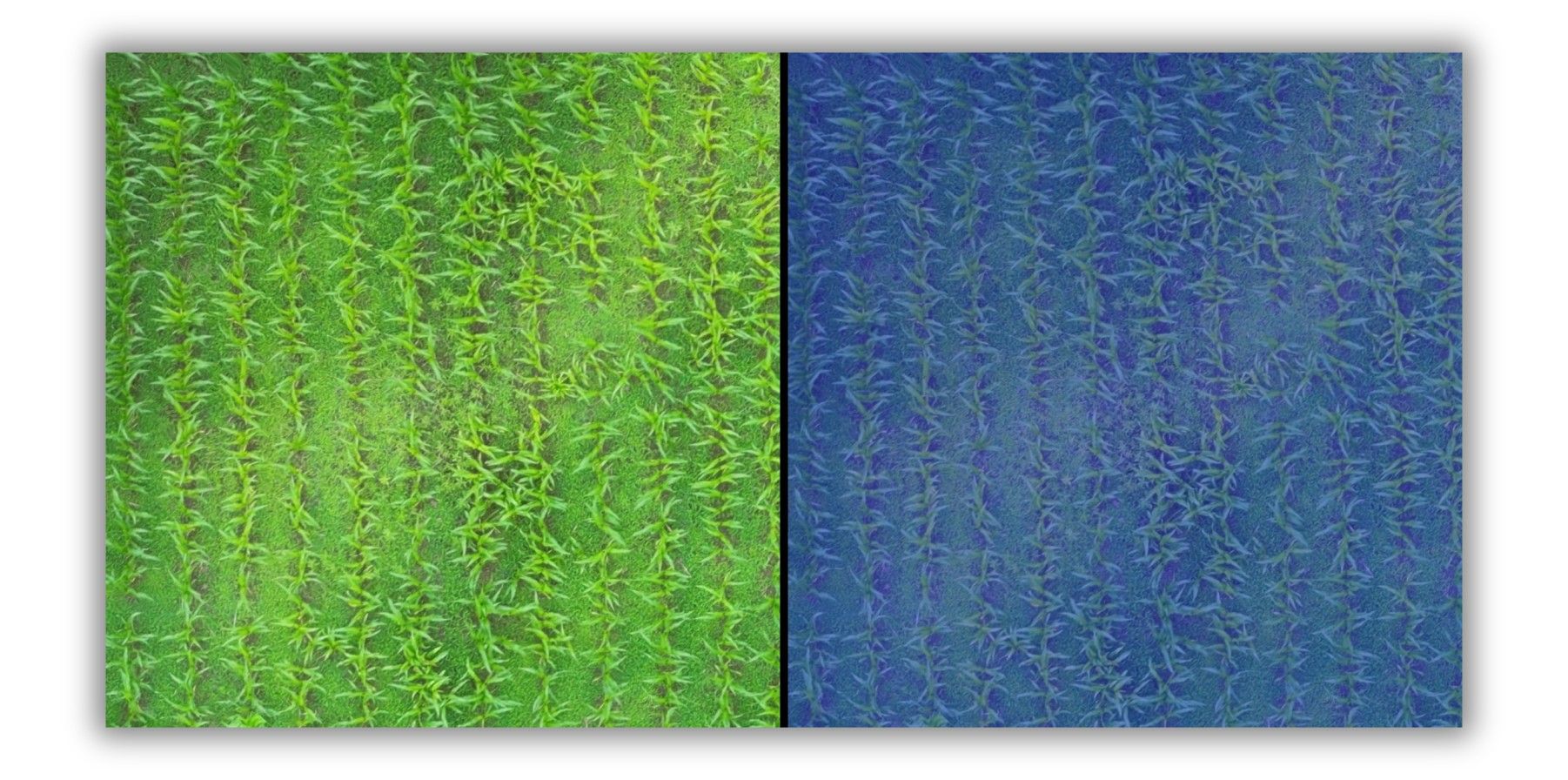

Results
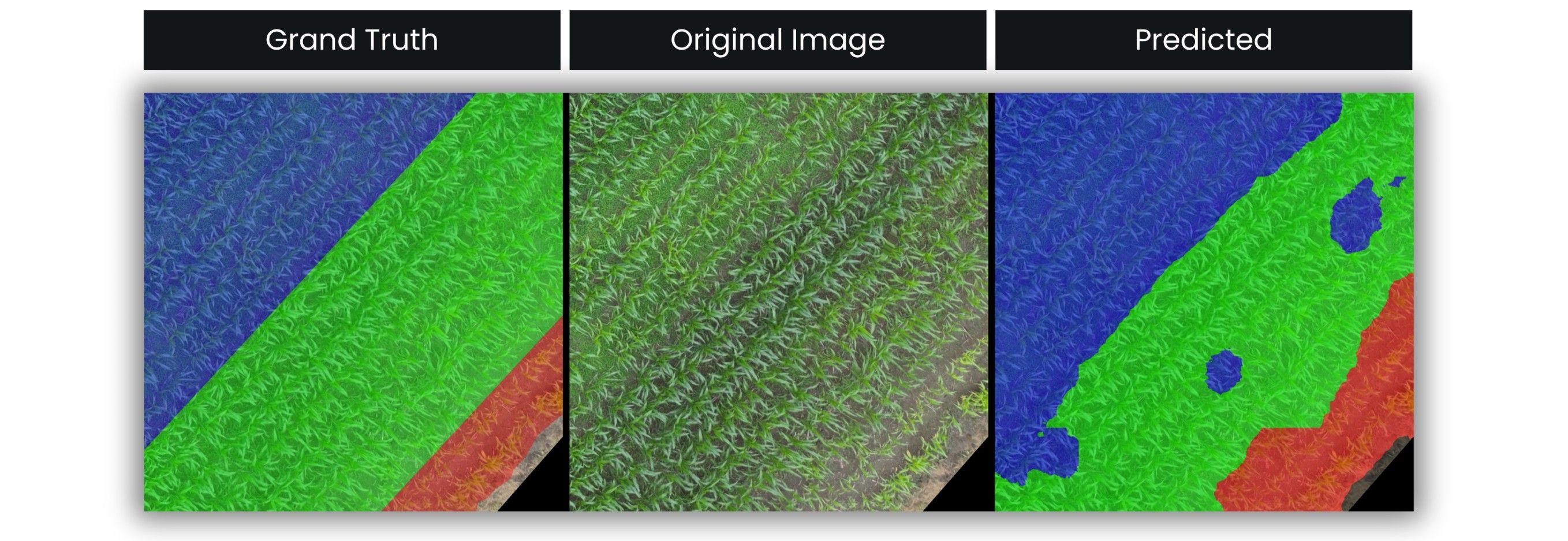


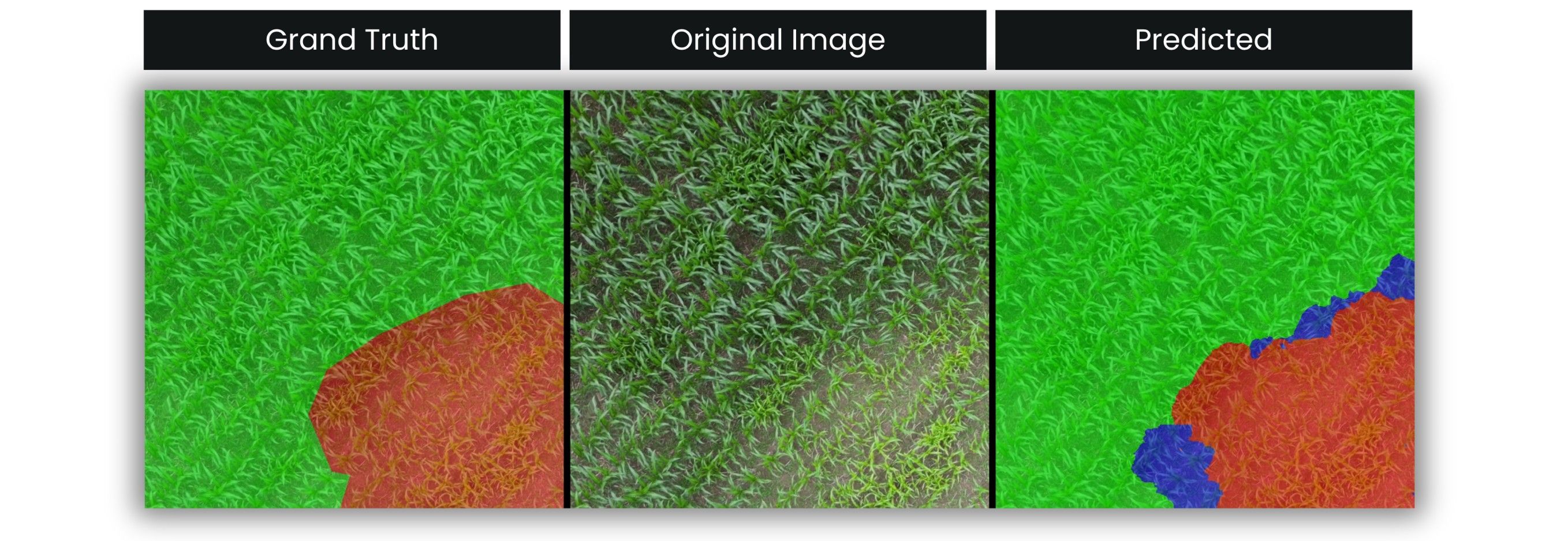
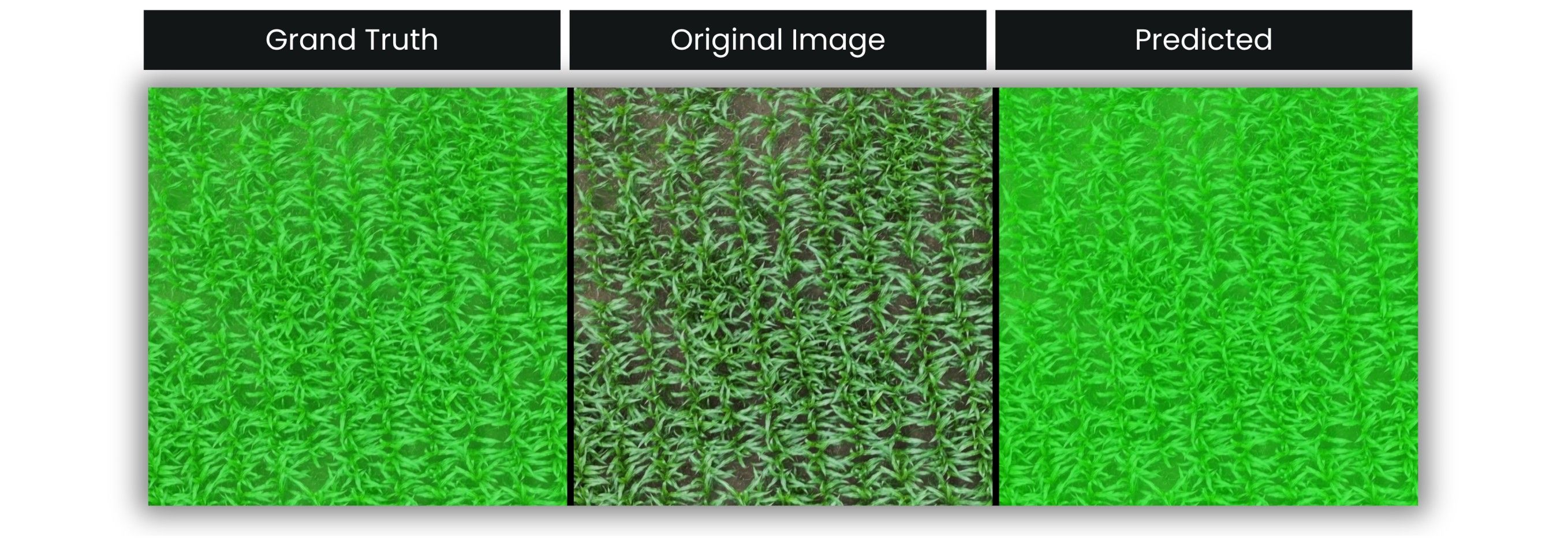
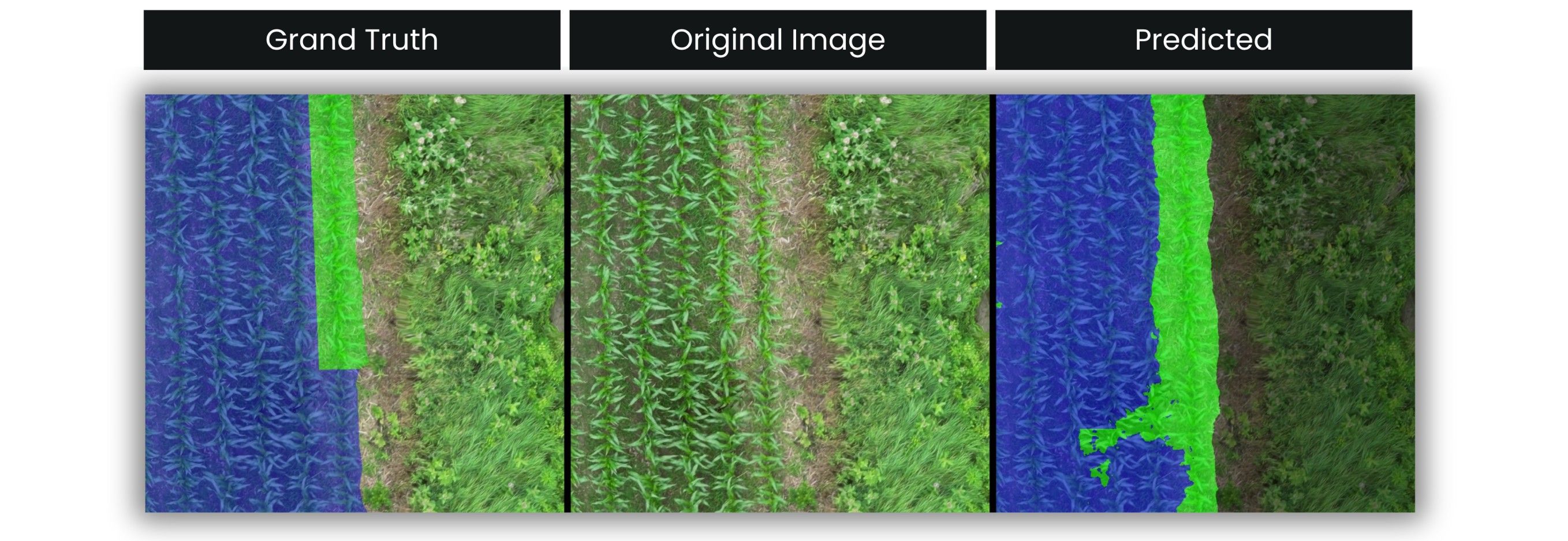

As you can see, our model was able to identify different areas of the field very well.
Future Work
In this project we detect stressed corn using RGB images. This means we can detect them based on their colors, with multispectral images we can detect stressed corn earlier and we can understand why the corn is stressed. For more information refer to Detecting Nitrogen and Phosphorus Stress in Corn Using Multi-spectral Imagery.
Conclusion
Using this model, the farmers can see the areas occupied by waterhemp in much less time and plan to control and manage them to have a better and higher quality crop.
Also, by knowing the area of parts that contain stressed and healthy corn, the farmers can estimate the volume of their final crop and plan for it. Additionally, saving images of results at different times and comparing them allows farmers to see whether the methods they have used to control waterhemp or the methods they have implemented to increase crop quality and reduce stress in corn have been effective and efficient, and whether they need to try another method. This way, they can find the method that works best in their fields. For more information refer to Remote Sensing in Agriculture including those for text and data mining, AI training, and similar technologies.